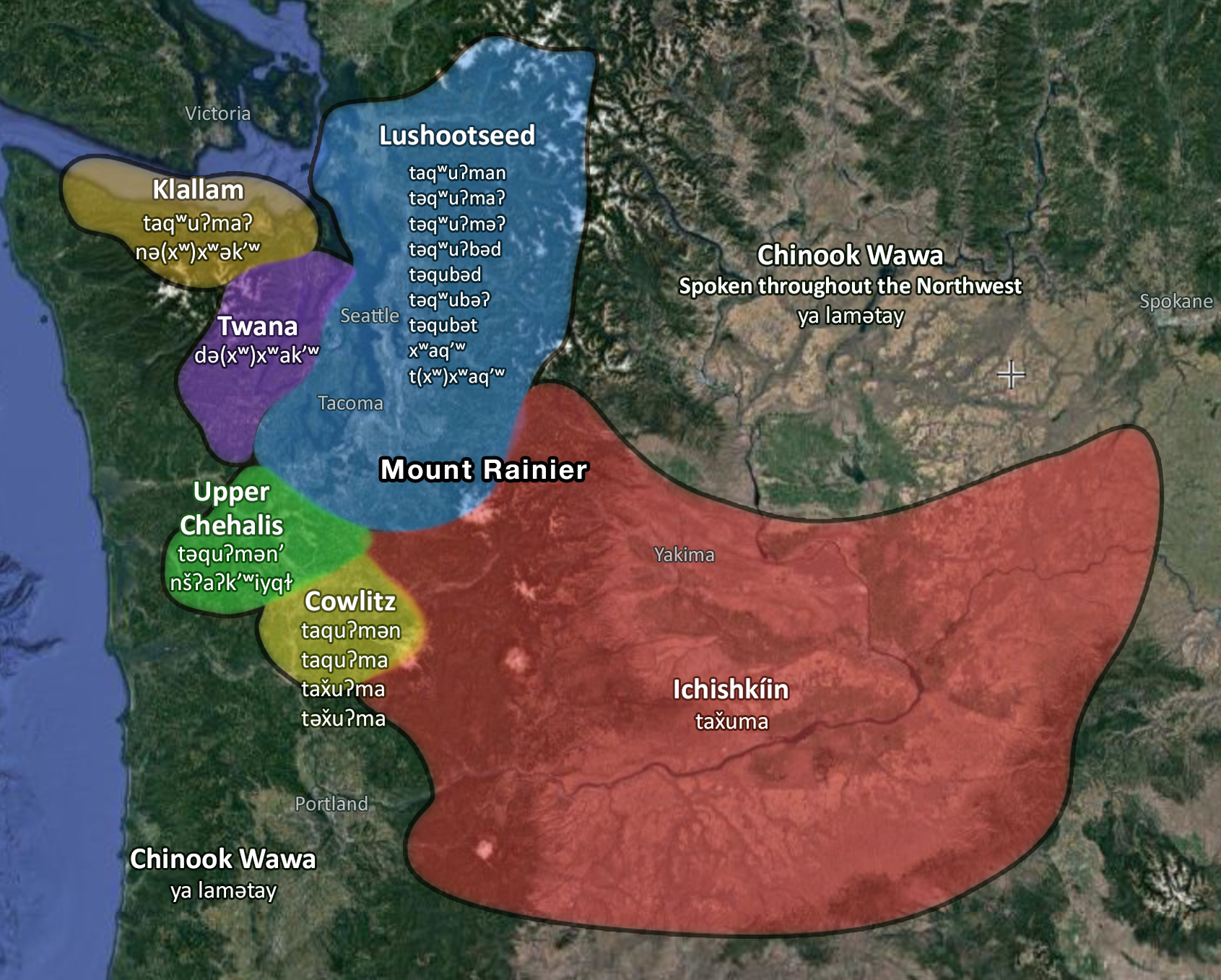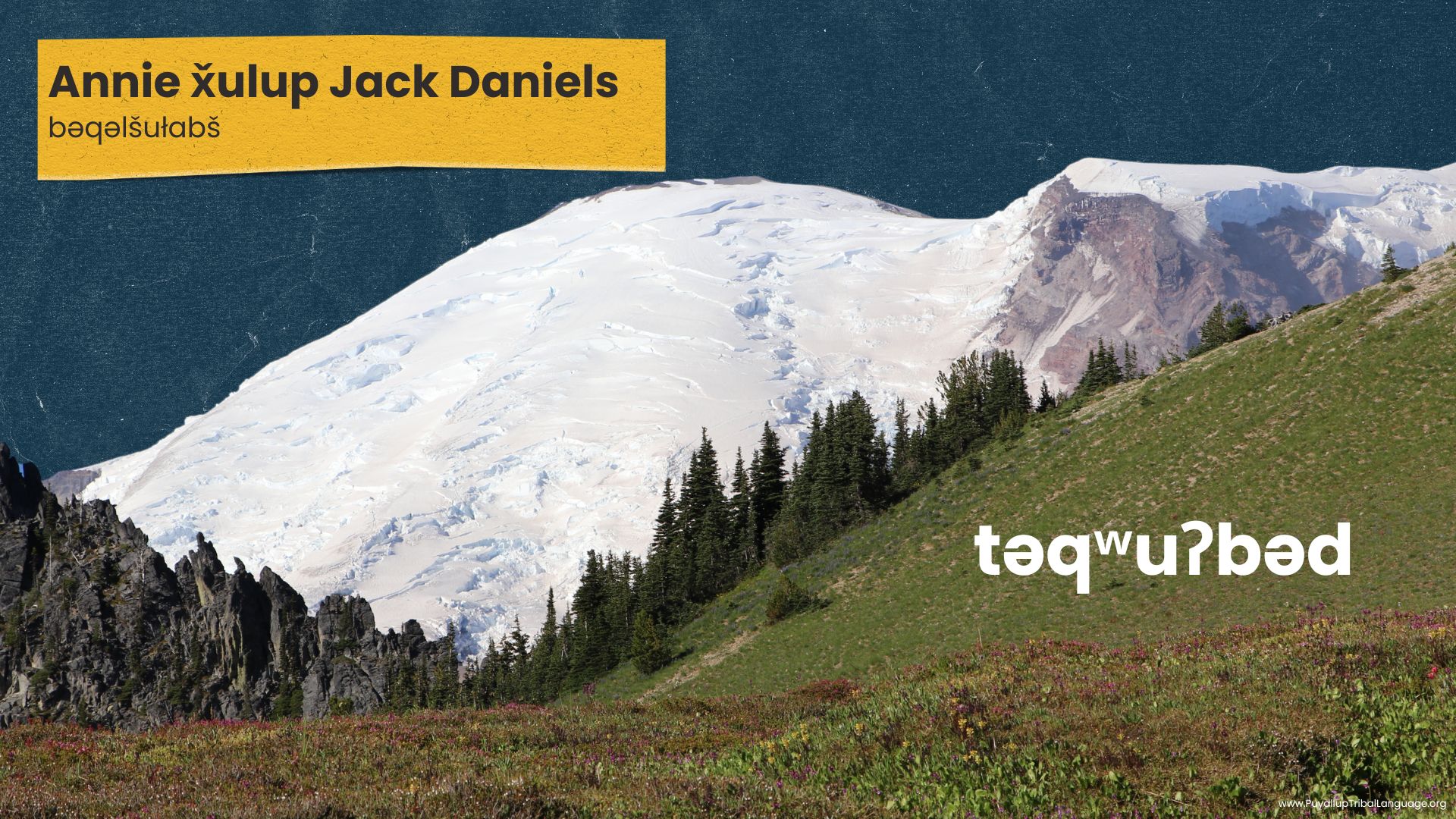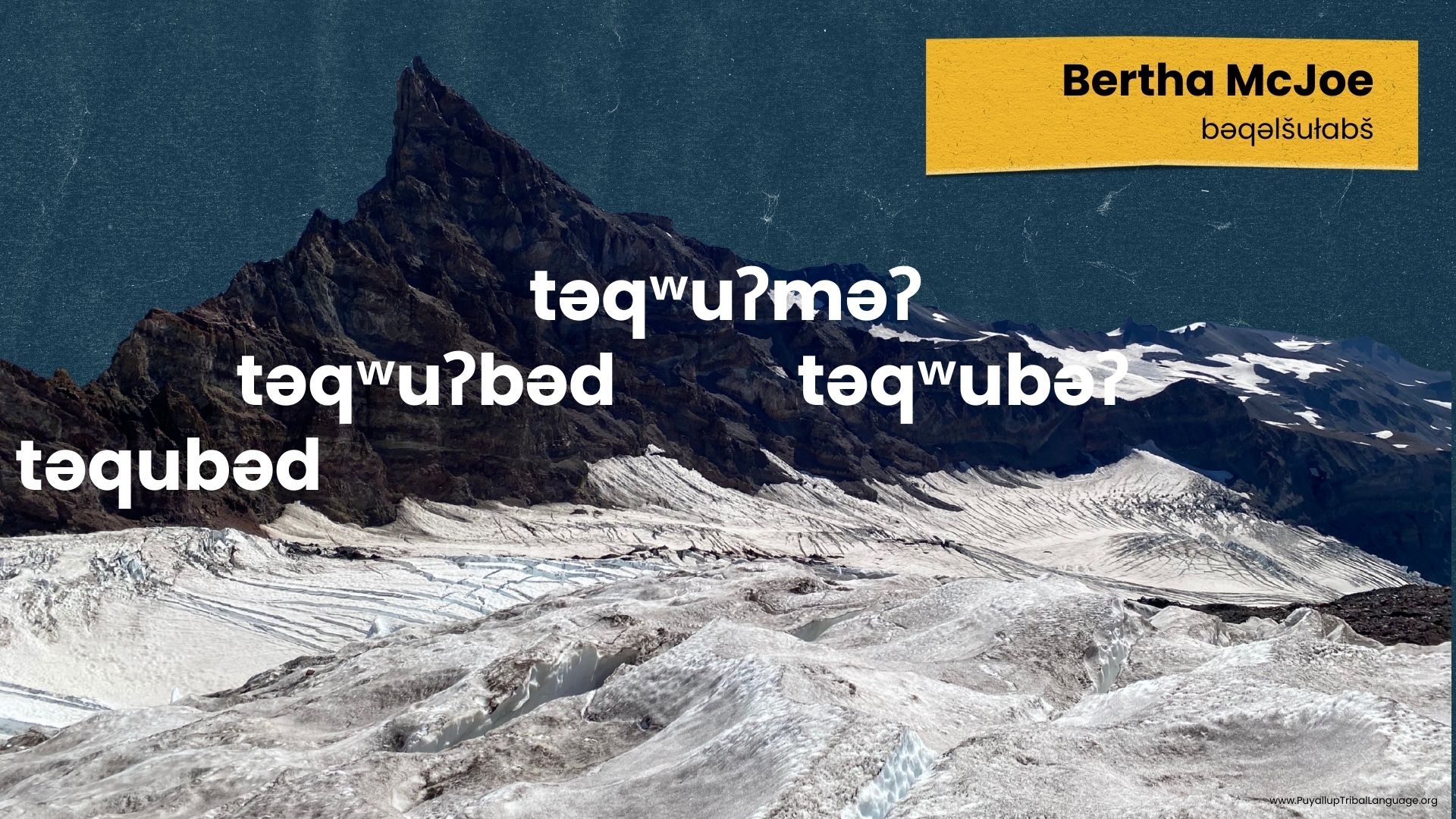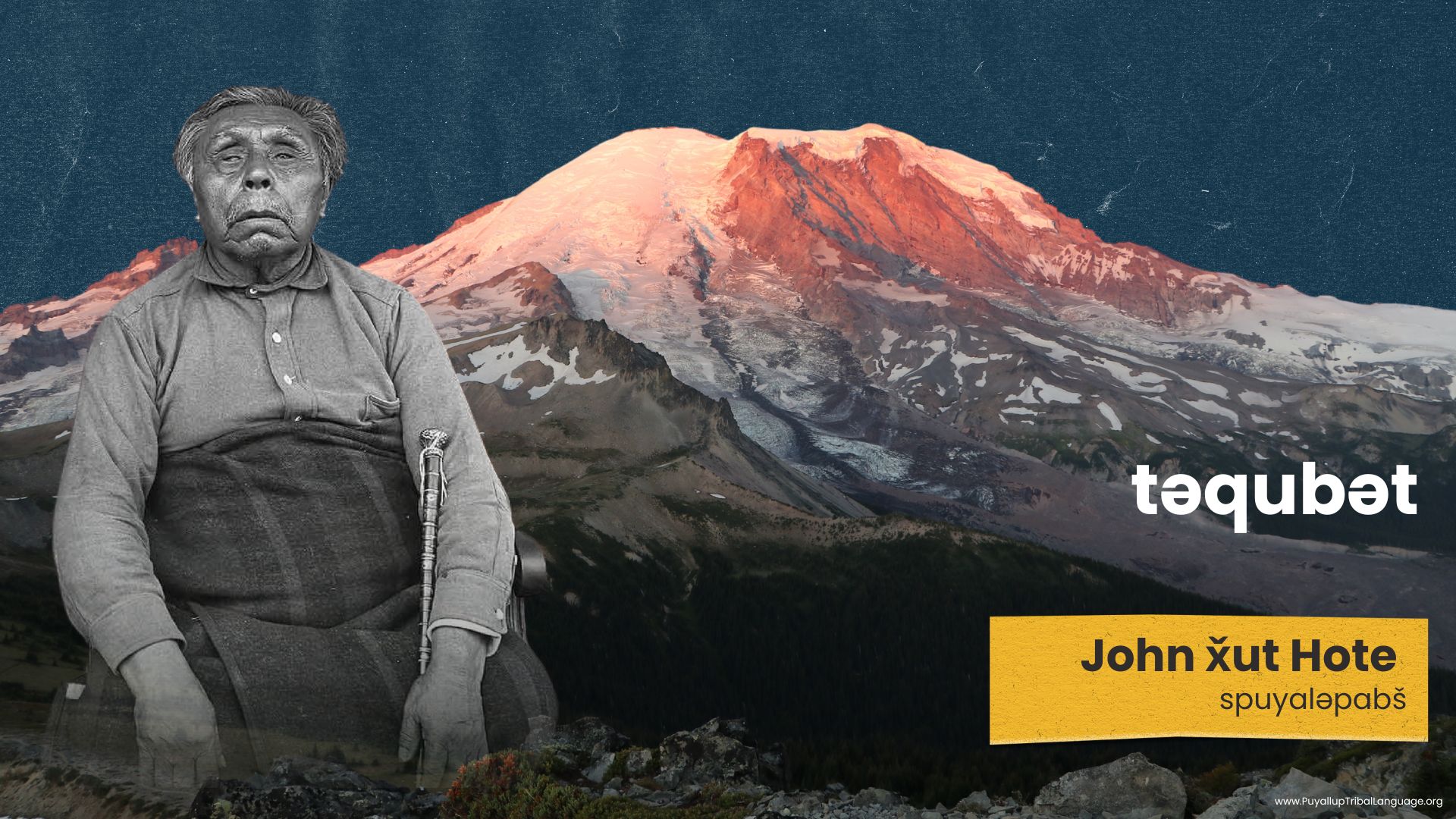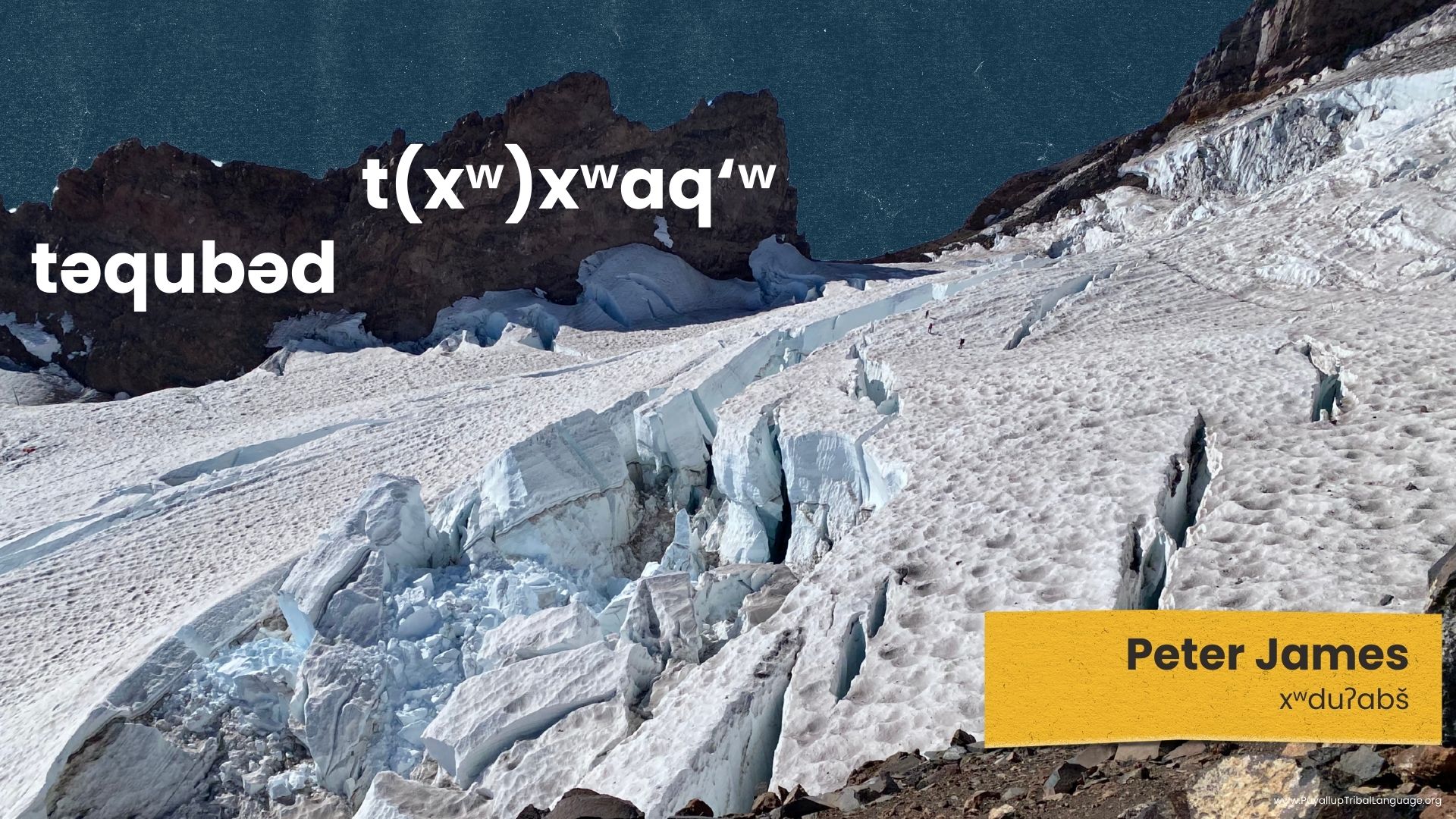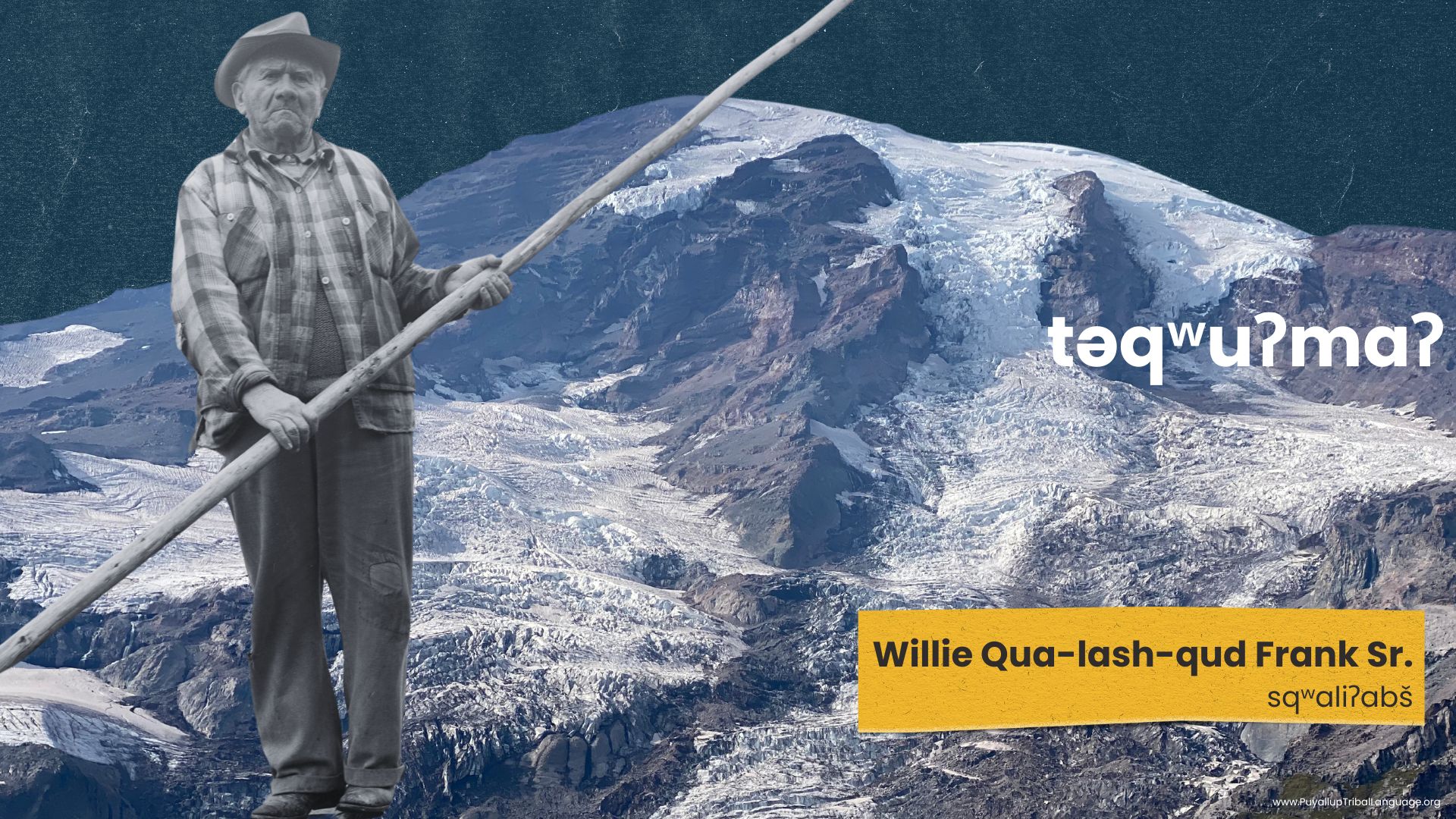THE MANY NAMES OF THE MOUNTAIN
WHAT IS THE ORIGINAL NATIVE NAME FOR MT. RAINIER AND HOW DOES IT TRANSLATE?
There has been a long-standing debate, going back many decades on the name of the mountain – Mt. Rainier. Our Tribe, along with other Tribes in Washington State have called the mountain by many names in our ancestral languages. Upon white contact, there have been many phonetic attempts at spelling our Indian names for the mountain. There are hundreds of archival documents, news articles and papers published using these anglicized spellings for the names.
Due to the large influx in requests regarding the Indian name for the Mountain from the general public, the Puyallup Tribe contracted Lushootseed Linguist, Zalmai ʔəswəli Zahir, Ph.D., to write a linguistic paper called, “An analysis of the names for Mount Rainier” in response to the longstanding community questions, “What is the original Native name for Mt. Rainier and what does it mean?”
In the paper, Zahir presents the grammar and historical evolution for 20 different names for the mountain that are used by seven different Tribal languages surrounding the mountain, and 19 of the 20 names are Salishan in origin. He also discusses the metaphorical meanings attached to these names, reflecting the First People’s traditional narratives and world views of the mountain. As discussed in the paper, it is not known how old the Native names for Mount Rainier are. However, the fact that most of the meanings for the names can only be understood by analyzing Proto-Salish grammar implies that these names come from a time when Salishan languages were more like Proto-Salish.
LINGUISTIC PAPER
“An Analysis of the Names for Mount Rainier”
Published in the Living Languages Journal
https://openpublishing.library.umass.edu/livinglanguages/article/id/2019/
Authored by Zalmai ʔəswəli Zahir, Ph.D., University of Oregon
Lushootseed Language Consultant for the Puyallup Tribe of Indians
CONTINUOUS RESEARCH
While the linguistic analyses for this paper are a solid foundational start, this non-exhaustive research will continue forward as Washington State Tribes gather and share linguistic resources with each other. This work is crucial to restore the current name to an ancestral name for the mountain. We look forward to hearing from our relative Tribes and the linguistic resources that we do not have access to.
PUYALLUP TRIBE OF INDIANS PRESS RELEASE
ʔuhuyəxʷ ti dᶻixʷ pipa ʔə tiiɫ qa sdadaʔ ʔə tiiɫ skʷatač, ʔux̌alad ti ʔəswəli Puyallup Tribal Language Consultant publishes first comprehensive analysis of the many Native names for Mount Rainier
ABSTRACT
txʷəl tiiɫ qa tudᶻaladub, qa tiiɫ ʔaciɫtalbixʷ yəxʷ tiiɫ xʷəɫ ʔaciɫtalbixʷ gʷəl ɫələhuyat txʷəl kʷi gʷəsʔay’gʷəsəd ti sdaʔ ʔə Mount Rainier txʷəl tiiɫ gʷəɫ ʔaciɫtalbixʷ sdaʔ (Carson, 2010; Changing the Name of Mount Rainier?, n.d.; Herbert Hoover Petition Signature Photo, 1926; Wickersham & Tacoma Academy Of Science, 1893). ʔal ti suhuyatils həlgʷəʔ, ʔuhayalbut həlgʷəʔ ʔuləhaydxʷ qa tiiɫ sdadaʔ yəxʷ tiiɫ sx̌udx̌ud txʷəl Mount Rainier gʷəl qa ti tusutulutəbs. ti dəxʷəsʔistəʔ gʷəl ʔučaɫabid stabəxʷ kʷi gʷəɫ ʔaciɫtalbixʷ tusdaʔ ʔə Mount Rainier gʷəl ʔəsx̌id kʷi ɫusx̌alads.
ʔal ti dišəʔ sx̌al, ɫulaʔad čəd tiiɫ qa sdadaʔ yəxʷ tiiɫ sx̌udx̌ud txʷəl Mount Rainier yəxʷ ti sutulutəbs, čədə ɫuʔugʷusbid ʔəsx̌id kʷi gʷəsux̌alatəbs. ƛ’al ɫubəʔugʷusbid čəd ʔəsx̌id kʷi gʷəsusik’ʷidčəɫ tiiɫ sdadaʔs yəxʷ tiiɫ sx̌udx̌uds čədə ɫubəʔugʷusbid ti sx̌əčalbs. huy ɫux̌aladəxʷ čəd ʔəsx̌id kʷi gʷəsʔuʔay’gʷəstəb ʔə tiiɫ tuʔaciɫtalbixʷ x̌əč ti sutulutəbs.
Over the years, there have been frequent attempts to rename Mount Rainier to its Indigenous name by both Native and non-Native parties (Carson, 2010; Changing the Name of Mount Rainier?, n.d.; Herbert Hoover Petition Signature Photo, 1926; Wickersham & Tacoma Academy Of Science, 1893). Through these endeavors, it has become apparent that Mount Rainier has a variety of Native American names and words associated with it written in various ways that have an assortment of meanings. The result is often a lack of clarity as to what the original, indigenous name is for Mount Rainier and how it should be written.
In this article I will present the various names and words associated with Mount Rainier and their written forms. I will then present morphological (grammar) and diachronic (historical evolution) analyses for these names. I will then discuss the metaphorical meanings that have attached to these words that reflect the First People’s cultural narratives and world view of Mount Rainier.
THE MANY NAMES FOR THE MOUNTAIN
In the paper, Zahir presents the grammar and historical evolution for 20 different names for the mountain that are used by seven different Tribal languages surrounding the mountain, and 19 of the 20 names are Salishan in origin.
| Name | Language |
|---|---|
| Part A: Words with /m/ and /n/ | |
| 1. taqʷuʔman | Lushootseed |
| 2. taquʔmən | Cowlitz |
| 3. təquʔmən’ | Upper Chehalis |
| 4. taqʷuʔmaʔ | Klallam |
| 5. təqʷuʔmaʔ | Lushootseed |
| 6. təqʷuʔməʔ | Lushootseed |
| 7. taquʔma | Cowlitz |
| 8. tax̌uʔma | Cowlitz |
| 9. təx̌uʔma | Cowlitz |
| 10. tax̌uma | Ichishkíin |
| Part B: Words with /b/ and /d/ | |
| 11. təqʷuʔbəd | Lushootseed |
| 12. təqubəd | Lushootseed |
| 13. təqʷubəʔ | Lushootseed |
| 14. təqubət | Lushootseed |
| Name | Language |
|---|---|
| 15. xʷaq’ʷ | Lushootseed |
| 16. t(xʷ)xʷaq’ʷ | Lushootseed |
| 17. dəxʷwak’ʷ | Twana |
| 18. nəxʷwək’ʷ | Klallam |
| 19. nšʔaʔk’ʷiyqɫ | Chehalis |
| 20. ya lamətay | Chinook Wawa |
| Name | Language |
|---|---|
| *taqʷuʔman’ | Proto-Salish |
| *nəxʷ(xʷ)ak’ʷ | Proto-Salish |
*taqʷuʔman’ and *nəxʷ(xʷ)ak’ʷ have evolved as Proto-Salish words prior to the development of the Salish languages mentioned in this paper, and it is not evolutionary from any one of these languages (The asterisk /*/ indicates that this is a Proto-Salish, theoretical variation of the word that dates back to a time to when everyone spoke Proto-Salish. See https://www.puyalluptriballanguage.org/about/ ).
The exact age for *taqʷuʔman’ is not known. The wide geographic distribution and its large number of variations suggests that this word has had a long time for this distribution to occur, hinting that this word is ancient.
MAP OF THE MANY NAMES FOR THE MOUNTAIN
Mount Rainier is surrounded by several Native languages. Lushootseed, Klallam and Twana lie to the north and west; Upper Chehalis and Cowlitz lie to the southwest; and Ichishkíin is to the east and south. Chinook Wawa is a language that is native to all of these tribes and beyond. Lushootseed and Ichishkíin have several different dialects spoken by Tribes within the boundaries of these languages. Lushootseed has 14 different tribal groups with several dialects. The groups mentioned in this article are: Duwamish, Muckleshoot, Puyallup, and Nisqually. Ichishkíin include Yakima, Klickitat, Warm Springs and Umatilla.
Of these seven languages, Klallam, Twana, Lushootseed, Upper Chehalis and Cowlitz are Salishan languages. Klallam, Twana and Lushootseed are part of the Central Salish subgroup of Salishan languages, while Chehalis and Cowlitz are part of the Tsamosan subgroup of Salishan languages. The Ichishkíin language territory borders the Salishan languages: Lushootseed, Upper Chehalis and Cowlitz along the Cascade Mountain Range, and it belongs to the Sahaptian language family which is a Plateau branch of Penutian (Jansen, 2010, p. 2). Chinook Wawa is a wonderful jargon language that is spoken throughout the Northwest. Although spoken by Salishan and Sahaptian Tribes, its structure is not specific to either of these two language families.
MEANINGS AND METAPHORS FOR THE MOUNTAIN NAMES
There are two sets of meanings from the research of the paper. One is the literal translation and the other is the metaphorical meanings that have been extended to this Mountain. The literal translations of the names were researched using historical linguistic analysis. The metaphorical translations are based upon world views and cultural values of our ancestors that were extended to the meaning of these names and they are just as important.
| Proto-Salish | Meaning & Metaphors |
|---|---|
| *taqʷuʔman’ |
|
| *nə(xʷ)xʷak’ʷ |
|
(These words pre-date Lushootseed. The asterisk /*/ indicates that this is a Proto-Salish, theoretical variation of the word that dates back to a time to when everyone spoke Proto-Salish)
LUSHOOTSEED FIRST LANGUAGE SPEAKERS
Here are a few of the Lushootseed speaking Elders who were recorded saying the name of the Mountain as they knew it.
- Ernest šidut Barr, Snoqualmie See Lushootseed biography here
- Willie Frank Sr., Nisqually Listen to Willie Frank Sr. audio here
- John Hote, Puyallup “təqubət yəxʷ dukʷibəɫ” – John x̌ut
- Annie x̌ulup Jack Daniels, Duwamish/Muckleshoot See Lushootseed biography here
- Peter James, Duwamish
- Bertha McJoe, Muckleshoot
RELIABLE RESOURCES
Reliable resources are based upon: personal communication, audio recordings, and dictionaries that were written by linguists who were trained to hear the many different non-English sounds and subtleties and pronunciation.
Reliable resources include:
- Personal communication with first language speakers
- Audio of first language speakers
- Lushootseed Dictionary
- Klallam Dictionary
- Ichishkiin Yakama/Yakima Sahaptin Dictionary
- Twana Dictionary
- Upper Chehalis Dictionary
- Cowlitz Dictionary
- Chinuk Wawa Dictionary
USEFUL RESOURCES
Other resources come from archival materials that are useful when they are in agreement with more reliable resources.
- Puget Sound Geographical Names, by Thomas Talbot Waterman
- Ethnographic Materials/Field Notes, by Thomas Talbot Waterman
- Mythology of Southern Puget Sound Legends Shared by Tribal Elders, by Arthur Ballard
OTHER RESOURCES
Other resources have invaluable cultural information. However, they are not reliable linguistic sources for historical analysis.
Publications include:
Publications, Documents & Newspaper clippings – dating back to 1877
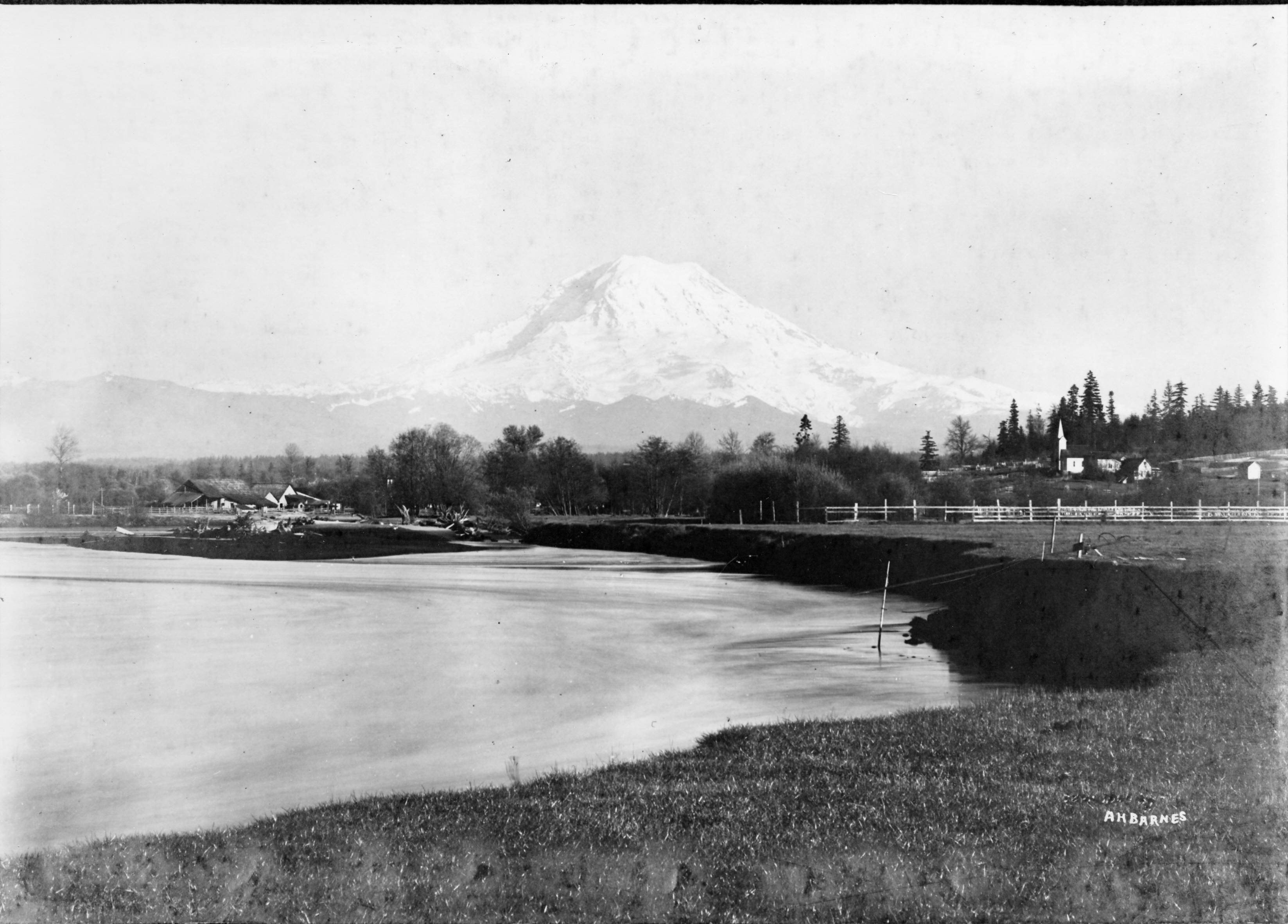 Photo courtesy of Tacoma Public Library
Photo courtesy of Tacoma Public Library

